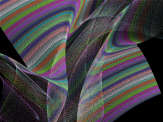
Recycled aggregate concrete (RAC) incorporating limestone calcined clay cement (LC³) holds promise as a solution to the depletion of natural resources for construction materials and is a way to mitigate the environmental impacts of energy-intensive cement production. However, the face slab concretes with a large fly ash dosage should be well cured under restrained and evaporation conditions at an initial hydration age. (5) The fly ash dosage around 30% is optimal for face slab concretes in terms of lowering shrinkage and refining the pore structures, without compromising much mechanical property. The pore structure and Ds are closely correlated with the shrinkage of face slab concrete.

late age increases from 2.902 to 2.946 with increasing of the fly ash dosage. (4) The Ds of face slab concrete is closely related with the concrete pore structures. At 180 days, the pore structures become more refined as the fly ash dosage increases to 30% however, this refinement effect is not as appreciable as the fly ash dosage increases from 30% to 40%. (3) The pore structures of face slab concrete at 3 and 28 days become coarser with the increase in fly ash dosage up to 40%. Nevertheless, the increase in fly ash dosage increases the drying-induced cracking risk under restrained conditions.
#Ultra fractal formulas crack
(2) Increasing fly ash dosage from 0 to 40% considerably improves the crack resistance of concrete to plastic shrinkage. By contrast, the fly ash addition could markedly reduce the autogenous shrinkage at early, middle and long-term ages.

The findings demonstrate that (1) the incorporation of 10–40% fly ash could slightly reduce the drying shrinkage by about 2.2–13.5% before 14 days of hydration, and it could reduce the drying shrinkage at 180 days by about 5.1–23.2%. Besides, the difference in shrinkage behavior due to fly ash addition was revealed from the viewpoint of the pore structure and fractal dimension of the pore surface (Ds). In this work, the effects of fly ash with four dosages (i.e., 10%, 20%, 30% and 40%) on the drying shrinkage, autogenous shrinkage and the cracking resistance of face slab concrete were studied. The crack resistance of face slab concretes to various shrinkages is crucial for the structural integrity and the normal operation of concrete-faced rockfill dams (CFRDs). Nevertheless, face slab concretes containing a high dosage of fly ash must be cured for a relatively long period before they can withstand high water pressure. (4) The optimal fly ash dosage in terms of the long-term impermeability and pore refinement of face slab concretes is around 30%. (3) The permeability of face slab concretes is closely correlated with their pore structures and Ds. At 180 days, the addition of fly ash improved the 180-day impermeability by less than 30%.

(2) The incorporation of 10–50% fly ash raised the average water-seepage height (Dm) and the relative permeability coefficient (Kr) of the face slab concrete by about 14–81% and 30–226% at 28 days, respectively.

The results illustrate that: (1) The inclusion of 10–50% fly ash lowered the compressive strength of face slab concretes before 28 days of hydration, whereas it contributed to the 180-day strength increment. Moreover, the difference in the permeability caused by the fly ash dosage variations is revealed in terms of the pore structure and fractal theory. Herein, the influences of five fly ash dosages (namely 10%, 20%, 30%, 40% and 50%) on the permeability property of face slab concretes were investigated. Concrete-face slabs are the primary anti-permeability structures of the concrete-face rockfill dam (CFRD), and the resistance of face slab concrete to permeability is the key factor affecting the operation and safety of CFRDs.


 0 kommentar(er)
0 kommentar(er)
